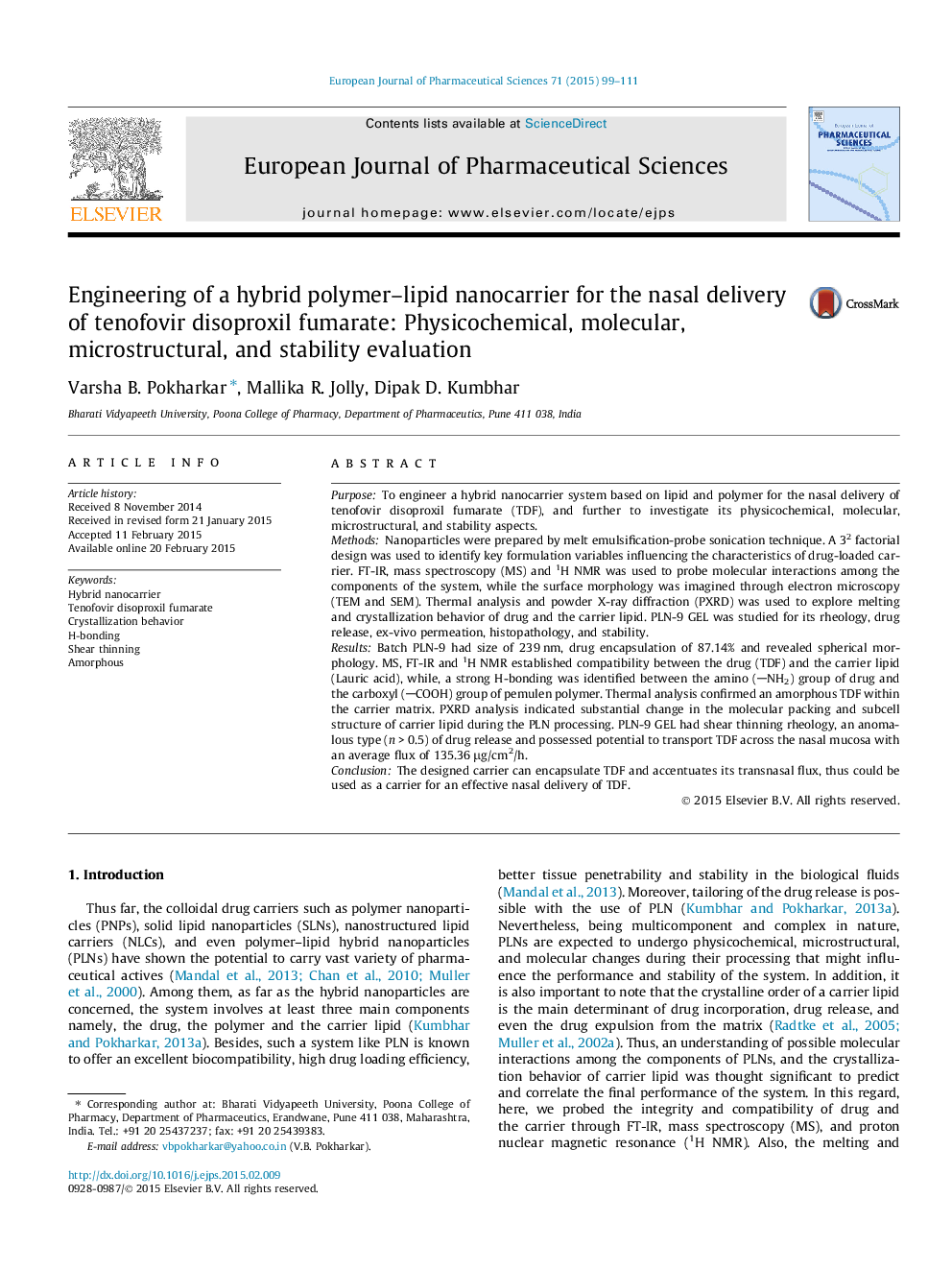| کد مقاله | کد نشریه | سال انتشار | مقاله انگلیسی | نسخه تمام متن |
|---|---|---|---|---|
| 2480316 | 1556179 | 2015 | 13 صفحه PDF | دانلود رایگان |
PurposeTo engineer a hybrid nanocarrier system based on lipid and polymer for the nasal delivery of tenofovir disoproxil fumarate (TDF), and further to investigate its physicochemical, molecular, microstructural, and stability aspects.MethodsNanoparticles were prepared by melt emulsification-probe sonication technique. A 32 factorial design was used to identify key formulation variables influencing the characteristics of drug-loaded carrier. FT-IR, mass spectroscopy (MS) and 1H NMR was used to probe molecular interactions among the components of the system, while the surface morphology was imagined through electron microscopy (TEM and SEM). Thermal analysis and powder X-ray diffraction (PXRD) was used to explore melting and crystallization behavior of drug and the carrier lipid. PLN-9 GEL was studied for its rheology, drug release, ex-vivo permeation, histopathology, and stability.ResultsBatch PLN-9 had size of 239 nm, drug encapsulation of 87.14% and revealed spherical morphology. MS, FT-IR and 1H NMR established compatibility between the drug (TDF) and the carrier lipid (Lauric acid), while, a strong H-bonding was identified between the amino (NH2) group of drug and the carboxyl (COOH) group of pemulen polymer. Thermal analysis confirmed an amorphous TDF within the carrier matrix. PXRD analysis indicated substantial change in the molecular packing and subcell structure of carrier lipid during the PLN processing. PLN-9 GEL had shear thinning rheology, an anomalous type (n > 0.5) of drug release and possessed potential to transport TDF across the nasal mucosa with an average flux of 135.36 μg/cm2/h.ConclusionThe designed carrier can encapsulate TDF and accentuates its transnasal flux, thus could be used as a carrier for an effective nasal delivery of TDF.
Figure optionsDownload high-quality image (188 K)Download as PowerPoint slide
Journal: European Journal of Pharmaceutical Sciences - Volume 71, 25 April 2015, Pages 99–111
